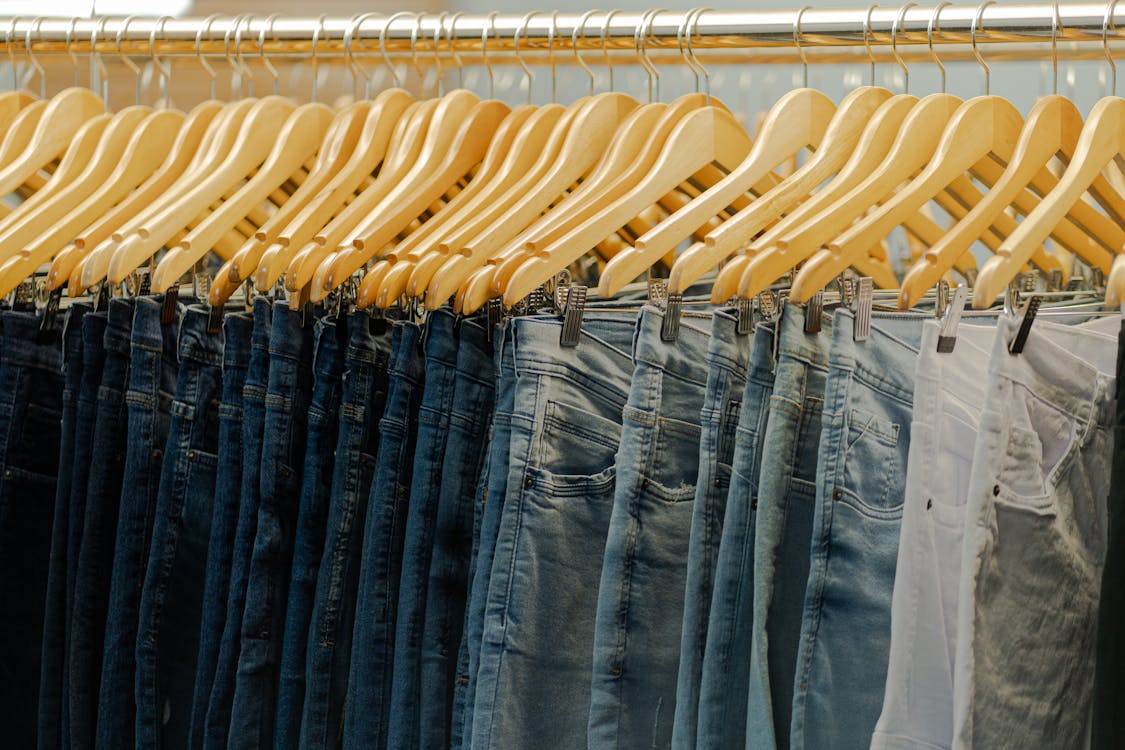We are completely in 2025 – a year that was once thought as the beginning of breakthroughs of sustainability, ethical supply chains and a total modern revolution. But if we make the inventory of the progress of the industry, the reality is much more sobering. Although remarkable steps have been made, the progress remains entangled in the threads of overproduction, greenwashing and non -durable practices. The great promise of a responsible fashion world still has to completely materialize, so that we are left at a critical intersection: do we stay the path of fast fashion waste and environmental damage, or are we finally committed to real, sustainable change?
If fashion is really serious about a greener future, 2025 must be the year of action – not just intention. From embracing circular fashion to reconsidering supply chains and reducing waste, the industry has clear, tangible steps to transform the ambition into reality. The good news? The solutions already exist. Now it’s time to put them into practice.
This is how the fashion industry can finally perform its sustainability game this year …
#1. Embrace circular fashion
Fast fashion remains one of the worst offenders in waste and pollution. In 2025, the industry must go beyond traditional recycling and fully commit to circular fashion – an approach that prioritizes a long service life, repairability and complete recyclability.
Brands such as Patagonia and Eileen Fisher have already set the stage with repair programs and purchasing initiatives, but the industry in general must follow the example. Imagine a world where your favorite brand recovers old garments, it repeats and resells – not just cutting waste but deepening the customer’s loyalty.
To realize this vision, fashion houses must innovate in materials, design for sustainability and build the infrastructure for large -scale clothing recycling. Circular fashion is not only a choice anymore – it is a necessity.
#2. Prioritize ethical supply chains

In the past year, the disturbing reality of unethical supply chains has exposed – from exploitation of wages and unsafe working conditions to destroy the environment. In 2025, transparency and accountability must become the gold standard of the industry – not just a marketing fashion word.
Brands can learn from Everlane, who ‘radical transparency’ champion by openly sharing where his products are made and how much they cost to produce. This model has built consumer confidence and established a precedent for integrity in fashion.
Blockchain technology presents another game changer. By making traceability in every production phase possible, Blockchain ensures that employees are treated fairly and materials are ethically produced. A dedication to ethical supply chains not only protects the environment – it protects millions of employees who can supply the fashion industry with electricity.
#3. Shift to regenerative agriculture

The raw materials that feed fashion – Koersas, Leather, Wool – come out against an enormous environmental costs. Conventional agriculture explains land, waste water and leaves harmful chemicals in ecosystems. In 2025, the industry must go beyond sustainability promises and actively embrace regenerative agriculture.
Regenerative agriculture is not just about reducing damage – it is about restoring soil health, stimulating biodiversity and catching carbon from the atmosphere. Pioneering brands such as Stella McCartney and Kering are already investing in regenerative sourcing, which shows that fashion can be a power for environmental repair.
Now imagine a world where your cotton dress not only reduces the impact – it actively fights climate change. That is the future fashion.
#4. Reduce overproduction

Overproduction is one of the most harmful practices of the fashion industry. Every year millions of unsold items of unpleasant endorses end up on landfills or are burned, wastes resources and damage the planet. In 2025, fashion must take on a “less” mentality.
An effective solution is to order to order, whereby clothing is only produced after they have been sold. Brands such as Maison Margiela and various independent labels are already pioneering with this approach, which reduces waste by ensuring that only demand -driven production takes place.
Moreover, artificial intelligence offers a way to better predict demand. By using AI to understand customer preferences and trends, they can prevent surplus inventory from creating those landfills and racks in the Kindt.
#5. Education and strengthen consumers

Sustainability is not only the responsibility of a brand; It is also up to consumers. In 2025, fashion companies must give priority to training their customers on the environmental impact of their choices. The better -informed consumers, the better decisions they can make.
Brands can launch campaigns that emphasize less, opt for quality over quantity and good clothing care. Offering stimuli such as discounts for returning old clothing or using environmentally friendly packaging can also motivate sustainable behavior.
Social media are the key in this movement. By working together with influencers, brands can turn environmentally conscious choices into a desired trend, which makes sustainability feel less like a chore and more as a statement.
The way for us
The fashion industry has creativity, resources and influence to lead a more sustainable future. However, this requires a collective effort – from designers and manufacturers to consumers and policy makers.
Although 2025 may not be the year that the industry becomes completely sustainable, it can serve as the turning point. By embracing circular fashion, giving priority to ethical supply chains, investing in regenerative agriculture, reducing overproduction and training consumers, the fashion world can take on the challenges of the challenges that lie for us.
The world looks and the commitment has never been higher. The question is not whether the fashion industry can achieve the opportunity – it is whether it will do. Let’s hope that 2025 marks the start of a really sustainable fashion revolution.
Featured image: Eireenz/Istock
Follow us on Instagram for the latest fashion, lifestyle and culture on Instagram @Stylerave_
– Read too





